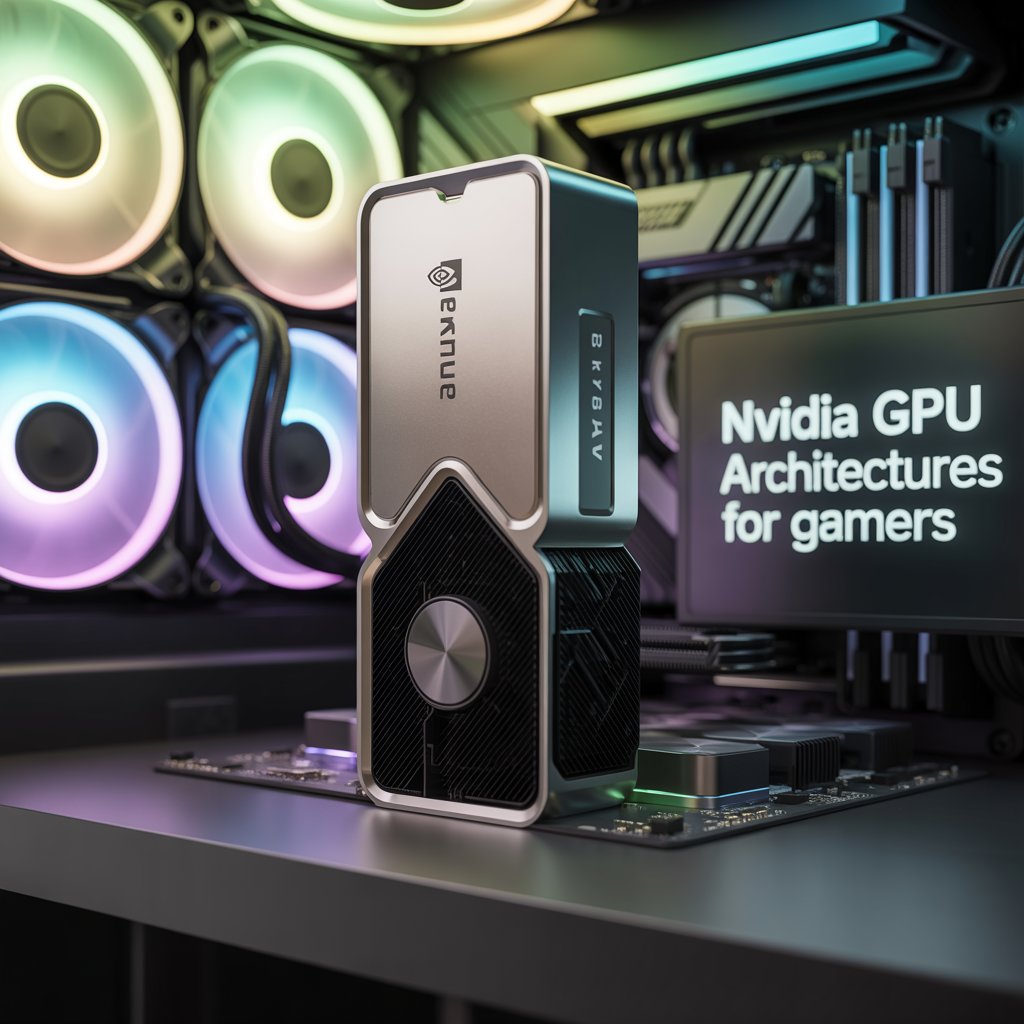NVIDIA GPU architectures are of different generations. Newer designs give faster speed, better power use, and stronger features like gaming, AI, and graphics.
In this guide, you will learn the key differences so you can understand which NVIDIA GPU architecture best fits your needs.
Introduction
NVIDIA GPU architectures are different generations of graphics card designs. Each new one improves speed, saves power, and adds modern features. From old Kepler to new Ada Lovelace, every step makes gaming, graphics, and AI better. This guide will explain the key differences and help you choose the right NVIDIA GPU architecture for your needs.
What is a GPU Architecture?
A GPU architecture is the blueprint or design that defines how a graphics card works. It controls speed, energy use, and features like ray tracing or AI performance. Just like smartphones improve with each generation, GPU architectures evolve to meet new demands.
Why Architecture Matters
Architecture decides how efficiently a GPU can handle tasks. The same number of cores can perform very differently under different architectures because the design, memory, and power handling all change.
NVIDIA’s Journey of GPU Architectures
NVIDIA has released many architectures over the past decade. Each one brought new features, better gaming performance, and improvements for AI and professionals. Let’s look at them step by step.
Kepler Architecture (2012)
Kepler was designed for power efficiency. It reduced heat and energy use compared to older GPUs. While great at the time, today it feels slow for modern gaming.
Pros: Lower power use, good performance for 2012 games.
Cons: Cannot handle modern titles well.
Maxwell Architecture (2014)
Maxwell focused on better gaming performance and smoother visuals. It was a big upgrade from Kepler.
Improved efficiency and speed.
Popular among gamers during its release.
Pascal Architecture (2016)
Pascal changed the game with higher speed and better VR support. It also gave creators tools for AI tasks.
The first architecture widely used for VR.
Balanced performance and efficiency.
Volta Architecture (2017)
Volta was not mainly for gamers but for professionals. It powered deep learning and AI with Tensor Cores.
Designed for data centers.
Huge leap in AI training.
Turing Architecture (2018)
Turing introduced real-time ray tracing, which makes lighting in games look realistic. It also added DLSS (Deep Learning Super Sampling) for sharper graphics without extra load.
First step toward modern graphics realism.
Big deal for gamers and creators.
Ampere Architecture (2020)
Ampere made both gaming and AI much faster. It delivered up to twice the performance of Turing in many cases.
Stronger ray tracing and DLSS.
Better power efficiency.
Ada Lovelace Architecture (2022)
Ada Lovelace is NVIDIA’s latest architecture. It focuses on extreme gaming performance, advanced ray tracing, and AI-powered graphics.
Faster speeds and smoother frame rates.
Perfect for 4K and beyond.
Key Differences Between NVIDIA Architectures
- Performance Boost – Every generation increases speed and frame rates.
- Power Efficiency – Newer GPUs do more with less power.
- New Features – From VR (Pascal) to ray tracing (Turing) to AI graphics (Ada Lovelace).
NVIDIA GPU Architectures for Gamers

- Best budget: Pascal (still strong for older games).
- Best mid-range: Ampere (RTX 30 series).
- Best high-end: Ada Lovelace (RTX 40 series).
NVIDIA GPU Architectures for Creators
If you edit videos, design 3D models, or use AI tools, architectures like Turing, Ampere, and Ada Lovelace are best. They support ray tracing and AI enhancements that speed up creative workflows.
NVIDIA GPU Architectures for Professionals
For scientists, researchers, and AI developers, architectures like Volta and Ampere are crucial. They provide Tensor Cores, which make training large AI models faster and more efficient.
Future of NVIDIA Architectures
NVIDIA is expected to release even more advanced designs in the coming years. Future GPUs will likely be faster, smaller, and smarter, focusing on AI and energy efficiency.
How to Choose the Right NVIDIA GPU
- Set your budget – High-end GPUs are powerful but expensive.
- Know your purpose – Gaming, video editing, or AI?
- Match architecture to needs – Older architectures may be cheaper but limited.
FAQs
Q1: Why does NVIDIA release new GPU architectures?
To improve speed, power efficiency, and add new features for gaming, AI, and professional tasks.
Q2: Which NVIDIA architecture introduced ray tracing?
The Turing architecture (2018) introduced real-time ray tracing and DLSS.
Q3: Is Pascal still good for gaming today?
Pascal works well for older and mid-level games but struggles with new 4K titles.
Q4: Which architecture is best for AI and research?
Volta and Ampere are powerful for AI, data centers, and deep learning tasks.
Q5: What makes Ada Lovelace different?
It delivers extreme gaming performance, advanced ray tracing, AI-driven graphics, and smooth 4K gameplay.
Conclusion
NVIDIA GPU architectures show how technology grows with each generation. From Kepler to Ada Lovelace, every step brought faster speed, smarter power use, and advanced features for gaming, AI, and professionals. Understanding these differences helps you choose the right GPU for your budget and needs. The right architecture makes your computer stronger, smarter, and future-ready.
